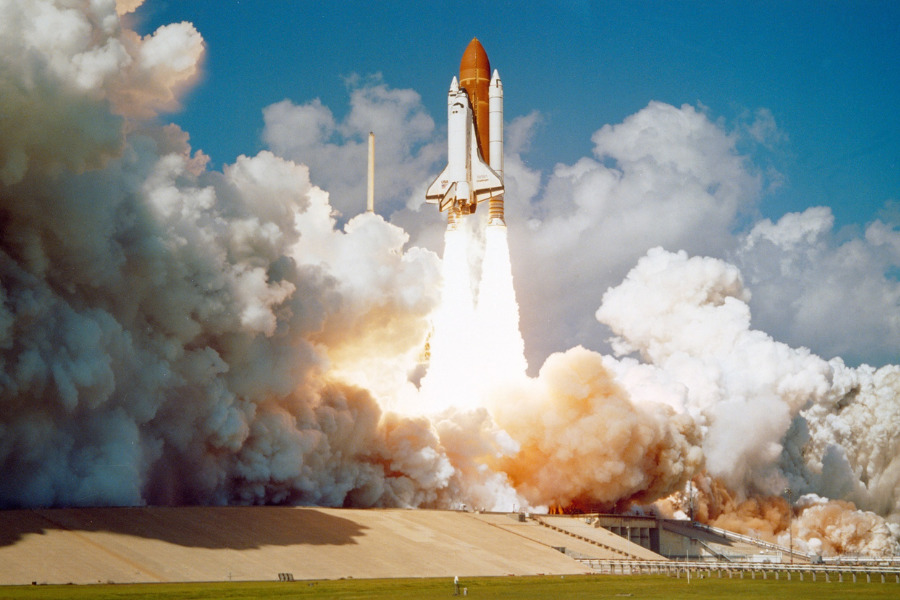Amid soil erosion, tens of millions of U.S. farmland acres lost to development, and global food demand rising upwards of 98% by 2050, there are serious concerns about how the agriculture industry will meet tomorrow’s food challenges.
And while many are looking to the heavens for divine intervention, others are looking in low Earth orbit for answers.
In fact, several farming innovations are rooted in research from the National Aeronautics and Space Administration (NASA) and International Space Station.
Self-driving tractors
GPS was still new in the 1990s when John Deere started using it for precision agriculture. The company wanted to go a step further and create a system to guide tractors autonomously. The challenge was that uncorrected GPS could be off by up to 30 feet due to data errors, drift in the GPS satellites’ internal clocks, and other factors.
NASA-developed software corrected for GPS signal errors and increased location accuracy to mere inches instead of feet. This innovation resulted in perhaps one of NASA’s most important contributions to modern society – highly accurate GPS navigation anywhere on Earth, including crop fields.
Today, self-driving tractors cultivate the majority of America’s farmland, and many of them still rely on NASA technology.
Water management
NASA can study an area using remote sensing, which employs a variety of instruments onboard different satellites to monitor Earth’s health from space.
With heavyweight U.S. agriculture states sometimes threatened by dry spells and drought, high-resolution NASA satellite data helps water resource managers develop tools to plan for and mitigate their impacts.
NASA partnered with the California Department of Water Resources to do just that. One project aimed to help growers match irrigation with the biological needs of each crop. Another involved monitoring areas where land is uncultivated, to allow for prompt emergency relief.
Crop forecasting
A number of NASA initiatives deal with understanding the current state of crop growth throughout the growing season and predicting final crop yields with that data.
Based on a NASA model, commercial software predicts corn production for farmers, ethanol producers and grain traders. It provides daily updates on the state of corn vegetation, incorporating nearly 30 variables including NASA satellite data.
NASA also helped develop algorithms to classify land types using satellite imagery. The work spawned a commercial computer learning program (now used with drone images) to assess the types, stages of growth, and health of crops in fields. The program inventories farmers’ fields and can predict annual crop yields.
LED systems
A result of NASA space farming research has been an LED light system, components of which have been incorporated into a variety of agricultural greenhouse and consumer aquarium lighting features. The lighting systems can be adapted to a specific plant during any growth stage, allowing maximum efficiency in light absorption by all available photosynthetic tissues.
Texts from plants
Thirsty plants can send text messages in order to “ask” for more water. NASA-supported research resulted in a leaf sensor that can monitor plants with electrical pulses, letting growers measure plant water levels directly.
Looking ahead
In December 2020, NASA and the U.S. Department of Agriculture signed a memorandum of understanding aimed at strengthening their longstanding partnership on space-based assets benefitting life on Earth.
The agreement brings together NASA’s experience with technology development and space-borne Earth science measurements and USDA’s scientific experience and knowledge of agricultural production, resource conservation, food security and safety, and forests and working lands.
NASA and USDA will explore research gaps of importance to the agricultural community that could be addressed through innovative Earth observation systems and technologies developed over the next decade.
“When we combine research on the International Space Station with the amazing capabilities that Earth observation provides, I believe that NASA, in partnership with USDA, could transform farming and bolster agricultural production in ways we can’t even imagine today,” said Jim Bridenstine, who served as NASA Administrator at the time of the announcement. “Microgravity research can unlock secrets in a wide variety of fields, and I’m particularly excited about our agency’s potential impact on next-generation agricultural techniques.”












